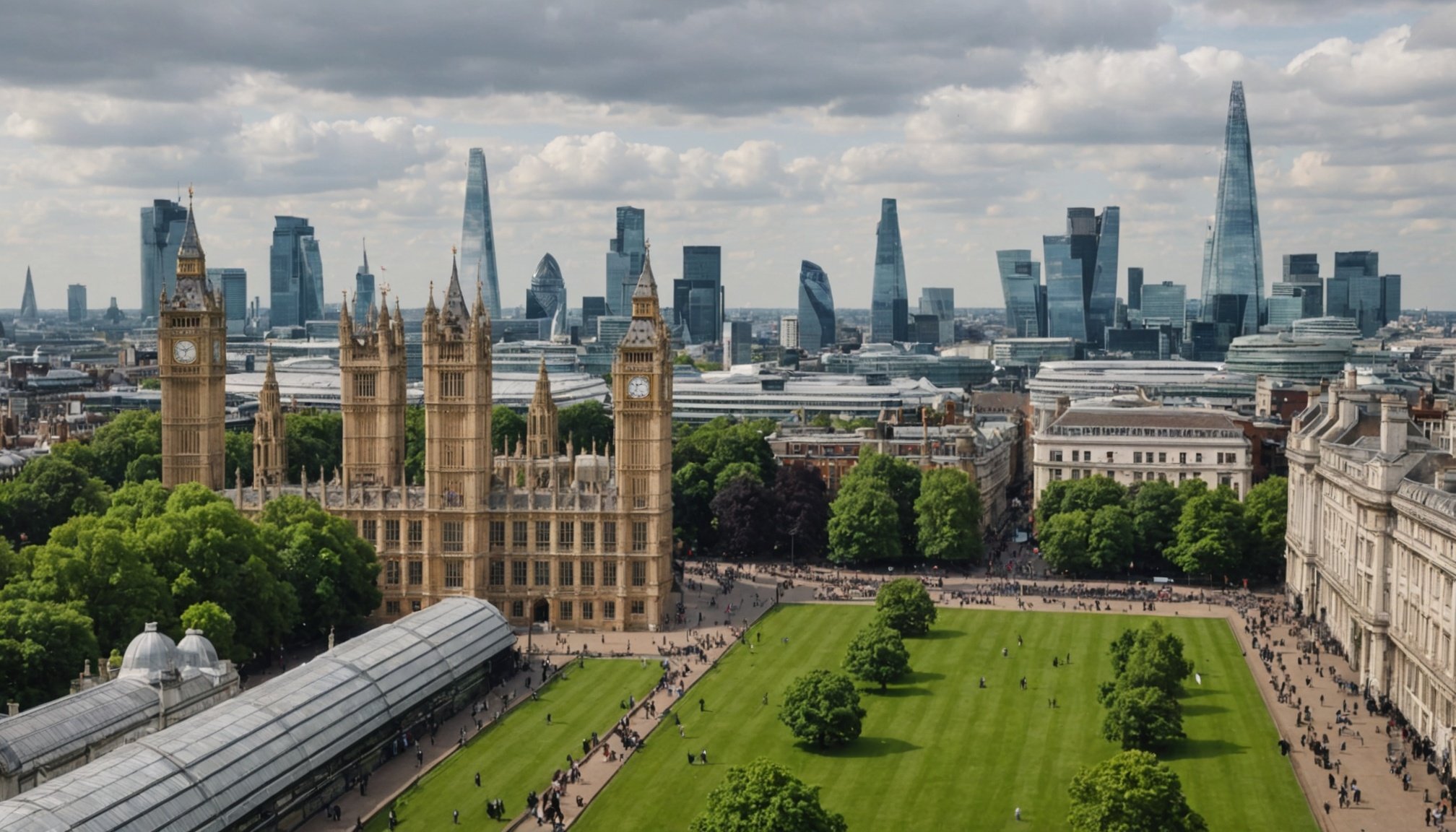London, a city steeped in history and rich in culture, offers more than just its iconic landmarks like the Tower of London or Buckingham Palace. Beneath its bustling exterior lies a treasure trove of hidden gems, waiting to be discovered by the curious traveler. These overlooked places tell stories of a bygone era, offering a window into the past that you won’t find in the well-trodden pathways of typical tourist attractions. In this article, we will guide you through some of the best-kept secrets in the city, helping you uncover the lesser-known historical landmarks that make London a city like no other. Prepare to explore a side of London that even some locals might not know exists.
The Secret Gardens of London
When you think of London, sprawling urban landscapes might come to mind. Yet, the city is home to a plethora of secret gardens, each a verdant oasis nestled away from the urban hustle and bustle. These hidden gardens are not just spaces of tranquility but are steeped in history and stories waiting to be told.
Also read : What are the essential tips for visiting Stonehenge to avoid crowds?
Chelsea Physic Garden
Established in 1673, the Chelsea Physic Garden is one of London’s best-kept secrets. Originally created for the cultivation of medicinal plants, it stands as a testament to the evolution of botanical science over the centuries. Here, you will find an astonishing variety of plants from around the world, each with its own story and historical significance.
The Garden Museum
Housed in the deconsecrated church of St Mary-at-Lambeth, the Garden Museum offers a glimpse into Britain’s rich gardening history. With exhibitions that span centuries, this museum is a haven for those looking to explore how gardening has influenced British culture and daily life.
Also read : How can you experience the best of British pub culture in a single pub crawl?
St. Dunstan in the East
Nestled between the modern skyscrapers of the financial district, St. Dunstan in the East is a remarkable ruin turned public garden. Originally built in the 12th century and later damaged during the Blitz, the church’s remains have been transformed into a lush paradise, providing a peaceful retreat in the heart of the city.
These gardens are more than just green spaces; they are living records of London’s history, each offering a unique perspective on the city’s past.
Unveiling London’s Forgotten Museums
While the British Museum and the National Gallery draw millions every year, London boasts a plethora of lesser-known museums that hold great historical significance. These institutions provide a fascinating insight into the city’s past, often preserving stories and artifacts that are not found elsewhere.
The Postal Museum
Tucked away near Mount Pleasant, the Postal Museum delves into the history of Britain’s postal service. It is more than just a collection of stamps and letters; it’s a journey through time, exploring how communication has evolved over the centuries. Visitors can even experience the underground Mail Rail, which once played a crucial role in delivering post across the city.
The Museum of London Docklands
Located in the historic West India Quay, this museum chronicles the history of London’s docks and their vital role in trade and global commerce. The museum’s exhibits cover the gritty realities of dock work, the dark history of the transatlantic slave trade, and the docks’ transformation into the modern hub they are today.
The Hunterian Museum
Hidden within the Royal College of Surgeons, the Hunterian Museum is a treasure trove of medical history. With over 3,500 fascinating specimens, it offers a glimpse into the evolution of medical science. From the collection of the pioneering surgeon John Hunter to modern medical marvels, this museum is a must-visit for those intrigued by the developments that shaped today’s medicine.
These museums may not be on every tourist’s itinerary, but they offer a rich and rewarding exploration of London’s multifaceted history.
Historical Walks Off the Beaten Path
For those who prefer to explore history on foot, London offers a myriad of walking paths that take you away from the crowded streets and into the heart of its historic neighborhoods. These walks reveal the lesser-known facets of the city’s past, offering an immersive experience that is both enlightening and enjoyable.
Hampstead Heath and Kenwood House
Begin your journey through history with a walk across Hampstead Heath, one of London’s largest and most ancient parks. The heath offers panoramic views of the city and leads to Kenwood House, a magnificent 17th-century mansion filled with exquisite art collections and rich history waiting to be explored.
The Hidden Alleys of the City of London
Venture into the narrow alleys and courtyards of the City of London to discover remnants of medieval times. These winding pathways open up to charming pubs, historic architecture, and tales of the city’s evolution from a Roman settlement to a global financial center.
The South Bank: From Shakespeare to the Southwark Cathedral
The South Bank offers a historical journey through London’s cultural past. Starting from the reconstructed Shakespeare’s Globe, cross the Thames to the majestic Southwark Cathedral, a place of worship with a history dating back to the 12th century. This area also includes the famous Borough Market, where you can sample local delicacies as you unravel the layers of history surrounding you.
Walking through these storied paths, you’ll find that every corner of London has a story to tell, often hidden in plain sight.
The Lesser-Known Towers and Their Tales
Beyond the grandeur of the Tower of London, the city harbors other towers, each with its own unique story. These often overlooked structures stand as silent witnesses to the trials and triumphs of the city’s past.
The Jewel Tower
Nestled beside the Palace of Westminster, the Jewel Tower is one of the few remaining structures from medieval Westminster. Originally built to house Edward III’s treasures, this 14th-century tower offers a fascinating insight into the history of the British Parliament and the evolution of the city around it.
The White Tower
While part of the iconic Tower of London, the White Tower itself deserves a closer look. Built by William the Conqueror in the 11th century, it stands as the oldest part of the fortress. Housing the Royal Armouries, it provides a glimpse into the military history that has long been central to the British monarchy.
St. Augustine’s Tower
Situated in Hackney, St. Augustine’s Tower is the sole remnant of a medieval parish church. Climbing to the top rewards you with sweeping views of the city, providing a unique perspective that marries past and present.
These towers, while not as widely visited as their famous counterparts, add depth to London’s historical narrative, offering visitors a deeper understanding of the city’s architectural and cultural evolution.
As we draw our journey through London’s hidden historical landmarks to a close, it’s clear that this city is a tapestry of stories woven through its overlooked places. From the lush secret gardens to the forgotten museums, these hidden gems are not just relics of the past, but living parts of the city’s vibrant tapestry. They offer you, the intrepid explorer, an opportunity to dive deeper into London’s rich history, to understand its evolution, and to appreciate the nuances that make it a truly unique place. Whether you have a day, a week, or a lifetime to explore, these underrated landmarks promise to enrich your experience, painting a fuller picture of London’s illustrious past.











